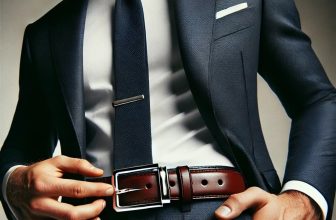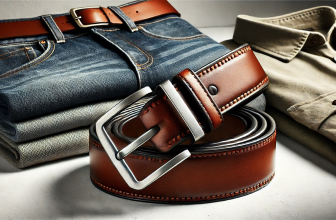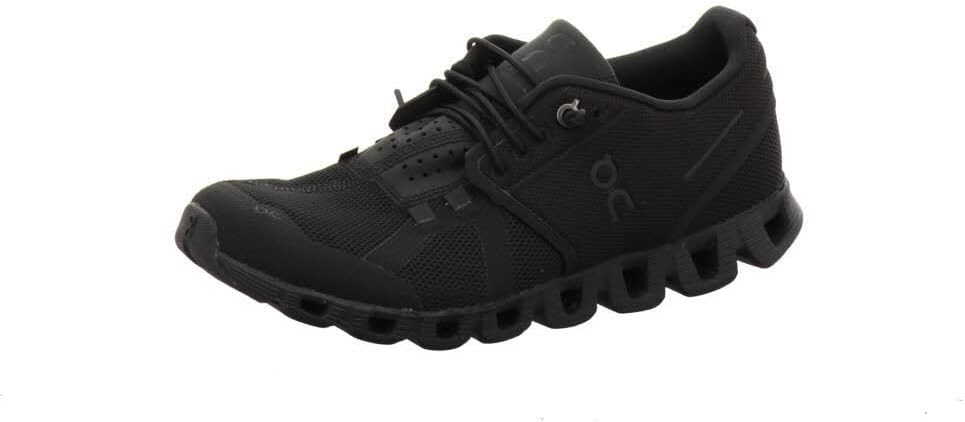Are you feeling like your wardrobe has lost its spark? You’re not alone. Many men find themselves stuck in a style rut, unsure of how to refresh their look without a complete overhaul. The truth is, the right color can go a long way in elevating your personal style and boosting your confidence. In this post, we’ll delve into the psychology of color and explore how specific shades can enhance your wardrobe, complement your skin tone, and align with your lifestyle. By the end, you’ll have the tools to make informed choices that truly reflect who you are. Get ready to unlock the transformative power of color!
The Psychology of Color
Color plays a significant role in shaping our emotions, perceptions, and behaviors. In various aspects of life—be it branding, interior design, or fashion—understanding the psychology of color can be a powerful tool. Let’s delve deeper into how specific colors influence our feelings and social interactions, along with practical examples in the marketplace.
The Power of Color Perception
Colors can evoke specific emotions and impressions. Here, we will identify key colors and their psychological impacts:
- Red: Often associated with passion and urgency, red can boost energy levels and increase heart rates. Brands like Coca-Cola harness this power to stimulate appetite and excitement.
- Blue: Seen as calming and trustworthy, blue is frequently used in corporate branding, such as in the logos of Facebook and Twitter, conveying reliability and stability.
- Green: Symbolizing nature and growth, green is often associated with a sense of tranquility and healing. Whole Foods Market uses green extensively to promote a connection to natural and organic products.
- Yellow: Known for its cheerful and uplifting qualities, yellow can enhance mood but should be used sparingly due to its potential to cause anxiety. Brands like IKEA utilize bright yellow to convey warmth and optimism.
- Purple: Often associated with luxury, creativity, and wisdom, purple is used effectively by brands like Hallmark and Crown Royal to convey a sense of grandeur and exclusivity.
Enhancing Mood and Confidence Through Color
Colors do not merely influence others’ perceptions; they also can have profound effects on our self-image and mood. Here are some practical lessons on how to leverage color for personal confidence:
1. Wardrobe Choices
Choosing the right colors for your attire can enhance your self-confidence and the way others interact with you:
- Black: Projecting authority, sophistication, and elegance, black suits are a staple in professional environments. Think of the tailored black suits created by Hugo Boss or Calvin Klein that command respect in business settings.
- Navy Blue: Offers a sense of professionalism without the starkness of black. Many successful entrepreneurs, including those at top consulting firms, often wear navy to convey stability and dependability.
2. Interior Design
The colors of your surroundings can significantly affect your mood and productivity.
- Home Offices: Painting a workspace in soft greens or blues can help promote focus and reduce stress. Companies like paint manufacturer Sherwin-Williams offer color palettes designed specifically for productivity.
- Living Spaces: Bright, vibrant hues such as yellow and orange can energize social spaces in your home, creating a welcoming atmosphere—perfect for companies like Benjamin Moore, which offer cheerful paint options for rejuvenating any living area.
The Influence of Color in Branding
Brands utilize color psychology to forge connections with their audiences. Below is a breakdown of how leading brands apply color to communicate different brand values:
| Brand | Color | Psychological Effect | Examples of Use |
|---|---|---|---|
| Blue | Trust and reliability | Logo, user interface for a professional feel | |
| Coca-Cola | Red | Excitement and passion | Logo and packaging evoke energy and urgency |
| Starbucks | Green | Nature and tranquility | Color scheme promotes a connection to quality coffee |
| McDonald’s | Yellow & Red | Joy and appetite | Logo instantly recognizable globally, inviting engagement |
| T-Mobile | Magenta | Creativity and innovation | Branding aims to distinguish itself in tech space |
Versatile Colors for Every Occasion
When it comes to building a functional and stylish wardrobe, understanding versatile colors is paramount. Certain shades can effortlessly transition from casual outings to formal events and everything in between. This section will outline key colors that serve as foundational elements in any closet while also providing examples and practical tips for their incorporation.
Classic Colors
Navy: The Timeless Staple
Navy is a classic color that exemplifies versatility. It is sophisticated enough for formal settings yet relaxed enough for casual gatherings. Incorporating navy pieces can elevate your style without overwhelming your look.
- Product Examples:
- Navy Blazer: The Hugo Boss ‘Gibson’ Slim Fit Blazer adds a polished touch to any ensemble.
- Navy Chinos: Pair with a crisp white shirt for a refined look; Banana Republic’s Essential Chino is a top choice.
Grey: The Ultimate Neutral
Grey is another must-have color that serves as an excellent backdrop. It can be paired with brighter shades to create balance or layered with darker tones for a more sophisticated attire.
- Product Examples:
- Charcoal Wool Suit: Opt for SuitSupply’s ‘Napoli’ Charcoal Suit for business meetings or formal dinners.
- Light Grey Sweater: Perfect for layering, the Everlane The Cashmere Crew is both comfortable and chic.
White: The Fresh Enabler
White is not just a summer color; it can be worn year-round. This color offers a clean slate, making it a perfect canvas for every outfit.
- Product Examples:
- White Button-Down Shirt: A classic, the J.Crew Mercantile Perfect Shirt goes seamlessly with jeans or tailored trousers.
- White Sneakers: The Adidas Stan Smith provides a fresh look for both casual and polished outfits.
Seasonal Colors
Earthy Tones: Transition into Fall
As the seasons shift, integrating earthy colors like olive green and rust can breathe fresh life into your wardrobe.
- Product Examples:
- Olive Green Utility Jacket: The Levi’s Original Trucker Jacket is perfect for layering and pairs well with other neutrals.
- Rust-Colored Sweater: The Anthropologie Somers Sweater can be a great pop of color when paired with blue or gray bottoms.
Pastels: Brighten Up Spring
Spring calls for lighter hues like blush pink, soft blue, and mint green. These colors can uplift your overall look while maintaining versatility.
- Product Examples:
- Blush Pink Slip Dress: The Reformation ‘Zari’ Dress is perfect for brunch or a casual day out.
- Mint Green Cardigan: The Uniqlo Ultra Light Down Cardigan can be layered for both casual and semi-formal events.
Mixing and Matching Tips
Understanding how to mix and match these versatile colors can maximize the potential of your wardrobe. Here are some practical strategies to consider:
- Layering: Use classic colors as the base and add seasonal colors through layers. For instance, wearing a navy base with a light grey sweater and a rust utility jacket creates depth and interest.
- Contrast Accessories: Use accessories to introduce seasonal colors without overwhelming your look. A rust-colored bag or blush pink shoes can complement a classic outfit beautifully. Brands like Fjallraven’s Kanken Backpack in vibrant hues bring a playful twist.
- Patterns and Prints: Incorporate patterns in classic colors. A floral navy dress or grey plaid trousers integrates versatility and can be styled with seasonal accessories.
- Proportions: Play with different shades and proportions. For example, pairing a white oversized shirt with fitted, olive green trousers helps create a balanced silhouette.
Quick Reference Color Combinations
| Base Color | Seasonal Color | Accessory Options | Example Outfit |
|---|---|---|---|
| Navy | Blush Pink | Blush Pink Scarf | Navy blazer, white top, blush pink scarf |
| Grey | Olive Green | Brown Leather Belt | Grey sweater, olive green chinos, brown shoes |
| White | Rust | Rust Crossbody Bag | White tee, dark denim, rust crossbody bag |
In summary, cultivating a wardrobe with versatile colors allows for maximum adaptability, from professional engagements to weekend outings. With classic staples and a touch of seasonal flair, you can express your personal style while being prepared for any occasion.
Choosing the Right Color for Your Skin Tone
Selecting the right colors to complement your skin tone is an essential aspect of fashion and personal style. Understanding whether you have warm or cool undertones can significantly impact your choice of clothing, makeup, and accessories. This section will guide you through the process of determining your skin tone and suggest specific colors that enhance your natural beauty.
Understanding Warm vs. Cool Undertones
Before diving into color selections, it’s crucial to identify your skin undertone. Undertones are subtle hues beneath the surface of the skin and can be categorized into three main groups—warm, cool, and neutral.
Identifying Your Undertone
Here are some straightforward methods to determine whether you have warm or cool undertones:
- Vein Test:
- Look at the veins on the inside of your wrist.
- If they appear more green, you likely have warm undertones.
- If they look blue or purple, you likely have cool undertones.
- Jewelry Test:
- Consider which metal looks better against your skin.
- Gold jewelry typically complements warm undertones.
- Silver jewelry tends to enhance cool undertones.
- White Paper Test:
- Hold a piece of white paper up to your face in natural light.
- If your skin appears more yellow against the white, you have warm undertones.
- If your face looks pink or rosy, you have cool undertones.
Color Chart for Skin Tones
Warm Undertones:
- Recommended Colors:
- Earth tones: mustard yellow, olive green, rustic orange, and warm browns.
- Jewel tones: amber, coral, and deep browns.
- Best Neutrals: Cream, warm beige, and taupe.
Cool Undertones:
- Recommended Colors:
- Jewel tones: sapphire, emerald green, and royal blue.
- Pastels: lavender, soft pink, and icy blue.
- Best Neutrals: Black, white, and cool gray.
Color Comparison Table
| Undertone | Colors to Wear | Colors to Avoid |
|---|---|---|
| Warm | Mustard yellow, olive green, coral, beige | Bright white, cool gray, and black |
| Cool | Sapphire, emerald green, lavender, white | Earth tones, orange, and gold |
Real-life Examples
To illustrate how these colors can enhance your appearance, let’s look at a few notable examples.
Celebrities with Warm Undertones:
- Jessica Alba: Often seen in earthy tones like olive green dresses or mustard yellow tops. Retailer Nasty Gal offers a variety of styles in similar hues that can emulate her looks.
- Beyoncé: She frequently opts for warm shades, showcasing stunning looks in burnt orange and soft browns. The Dior Addict Lip Maximizer in a peachy shade complements her warm complexion beautifully.
Celebrities with Cool Undertones:
- Angelina Jolie: Known for her striking looks in deep jewel tones like emerald green. The Tom Ford Emerald Lust Lip Color perfectly complements her cool undertones.
- Emma Stone: Often found in soft pastels or vibrant jewel tones. The Lancome L’Absolu Rouge Lipstick in a soft pink shade is an excellent match for her complexion.
Practical Applications in Fashion
Here are some practical applications to help you incorporate the right colors into your wardrobe and makeup routine:
- Wardrobe Choices:
- For warm undertones, consider options from brands like Anthropologie or Free People, which often have pieces in earth tones and warm hues.
- For cool undertones, explore collections from Ted Baker or J.Crew, offering a range of pastel and jewel-tone options.
- Makeup:
- Warm undertones benefit from foundations with yellow or golden bases. Brands like Clinique and Fenty Beauty offer a vast range of shades to explore.
- Cool undertones should look for foundations with pink or neutral bases. NARS and Maybelline have excellent offerings that cater to this skin type.
- Accessories:
- Jewelry can also emphasize your skin tone. For warm undertones, consider gold statement pieces, while cool undertones may prefer silver or platinum.
By choosing the right colors that align with your skin tone, you empower yourself to enhance your overall appearance dramatically. Take the time to experiment with various shades, and watch how the right colors bring out the best in you.
Final Thoughts on Elevating Your Style Through Color
In conclusion, color plays a crucial role in elevating your wardrobe and enhancing your overall style. Throughout this post, we’ve explored how different colors can influence your mood, convey your personality, and complement your complexion. From bold hues that make a statement to subtle shades that inspire confidence, your clothing palette can significantly impact how you feel and how others perceive you.
We encourage you to experiment with various colors, keeping in mind your personal style and lifestyle needs. Remember, your wardrobe should reflect who you are. As you embark on this colorful journey, don’t forget to identify your ‘power color’—the one that not only suits your complexion but resonates with your inner self. This strategic choice will empower you and transform your wardrobe into a true reflection of your unique identity. Embrace color, and watch how it elevates your style!













I love the idea of versatile colors, but how do I make sure I’m not just sticking to the same palette? I want to branch out but feel overwhelmed sometimes.
What about the darker shades? Sometimes I feel like wearing black is too ‘blah’ but it’s so easy. Is there a way to make it feel fresh and not boring?
Absolutely! Black can sometimes feel too basic, but trying out textures like leather or mixing it with vibrant accessories can definitely breathe new life into it. Experimenting with layering is another great way to keep things interesting!
I’ve found that investing in a solid navy blazer can elevate almost any outfit! It’s like the Swiss Army knife of colors. Anyone else have a go-to piece that works with every color?
I’d love to see an article on how to mix patterns and colors! That seems like a tricky area for a lot of people.
Mixing patterns can be a fun way to elevate your wardrobe! I’ll definitely consider writing a piece on that. Stay tuned!
You could try incorporating just one bold color into your outfit and see how it feels! It can be as simple as a bright scarf or a pair of shoes. Just start small and build your confidence over time.
That’s a great approach! Starting with accessories is a low-commitment way to explore new colors without overwhelming yourself. You can gradually mix and match until you find what works for you!
I totally agree that colors can really change the vibe of an outfit! But I’m curious, which colors do you think are overrated? Like, is there a point where a color just gets too mainstream?
I’ve always been told I should wear earth tones, but honestly, I feel washed out in them. Anyone else feel like they don’t fit the ‘rules’ of color?
Great insights on skin tones! I often struggle with finding the right shades. Could you suggest a few specific colors for warm undertones? Something other than classic pastels would be awesome!
Yes! I think personal style should come first. If earth tones aren’t your jam, don’t force it. Find what makes you feel confident and rock that instead!
Exactly! Fashion should be about expressing yourself and feeling good. Don’t be afraid to break the ‘rules’ and find what genuinely resonates with you.
I’d love to see a breakdown of color trends for the upcoming season! What’s in and what’s out? Would be cool to know what to shop for next.
That’s a fantastic idea! Color trends definitely shift, and I’ll consider adding a seasonal color guide to my future articles. Stay tuned for that!